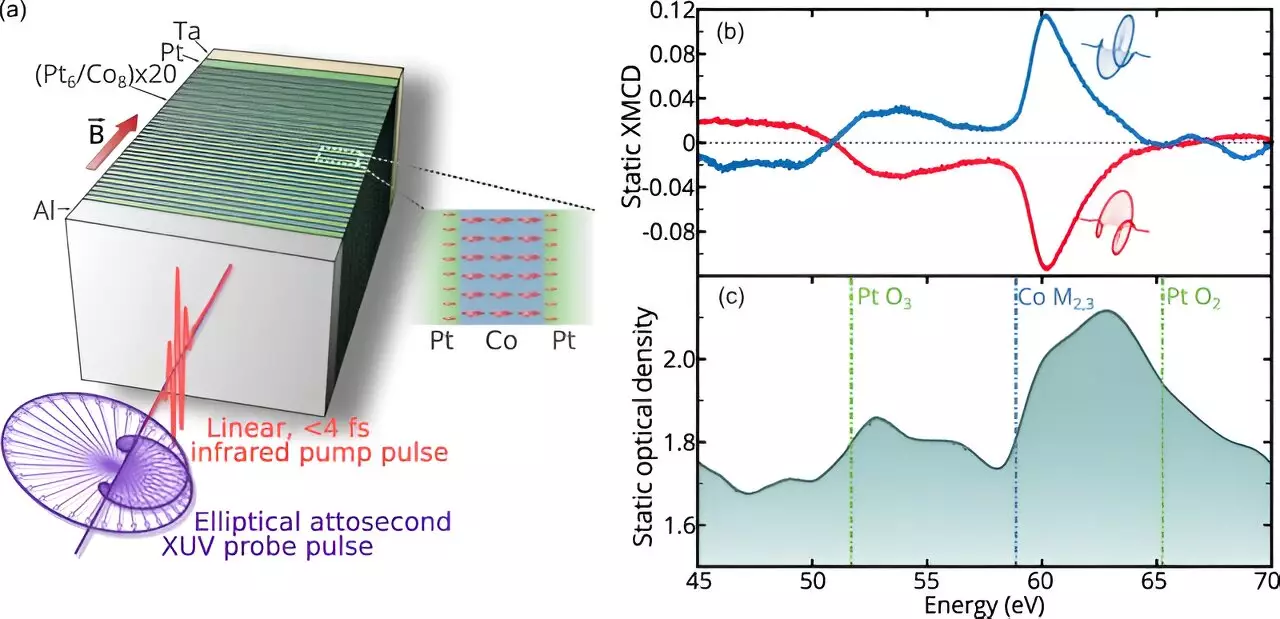In the quest for faster and more efficient electronic devices, researchers have continually explored novel properties of materials at the atomic level. Among these properties, **spin**, the intrinsic angular momentum of electrons, has emerged as a crucial player in the realm of spintronics—a field that merges magnetic and electronic functionalities. A remarkable advance in this area has been achieved by an international team of physicists who discovered a method to generate **spin currents** directly using ultrashort laser pulses, signaling a transformative shift in our approach to electronic device design.
Traditionally, the generation of spin currents has been hindered by inefficient methods that required a two-step process: first, generating spin using lasers, and second, filtering the resulting electron flow to ensure uniform spin orientation. This indirect approach often involved mixed spin orientations, leading to significant energy losses and complications in achieving the desired outcomes. As the demand for high-speed electronics escalates, these inefficiencies pose a substantial barrier to progress, necessitating the exploration of more effective techniques for spin current generation.
The groundbreaking study, published in Physical Review Letters, illustrates a significant departure from past methodologies. The research team utilized a cleverly designed target consisting of twenty alternating layers of **platinum** and **cobalt**, each merely a nanometer thick. By implementing a strong magnetic field perpendicular to these layers, they successfully aligned the spins of electrons within both materials. This carefully orchestrated environment paved the way for the subsequent application of a linearly polarized laser pulse, followed by a circularly polarized probe laser—all delivered in ultrashort bursts.
What sets this approach apart is the immediate creation of aligned spin currents, a feat accomplished within a remarkably short time frame of just a few femtoseconds. This rapid manipulation of electron spins not only enhances efficiency but also opens avenues for experimental validation and theoretical exploration.
The implications of this breakthrough extend far beyond academic intrigue. If harnessed effectively, these enhanced spin currents could radically improve the speed and efficiency of next-generation electronic devices, ultimately leading to lower energy costs and heightened performance. By simplifying the process of spin current generation, the researchers have laid the groundwork for a future where electronic devices can finally break free from the constraints of conventional performance limits.
Moreover, through a combination of experimental work and theoretical calculations aligning with their findings, the team has reinforced the viability of their method. As they delve deeper into understanding the intricate interactions of electrons and spins, the potential for practical applications in advanced technologies becomes increasingly promising.
With this new methodology showing such potential, the path forward is ripe for exploration. Future research will likely focus on scaling the technique for industrial applications and examining various materials and configurations that could further enhance spin current generation. As the world moves toward an era defined by rapid technological evolution, discoveries such as these will undoubtedly play a vital role in shaping the future landscape of electronics. In essence, this breakthrough not only advances scientific understanding but also heralds a new age of efficiency and power in electronic device technology.


Leave a Reply